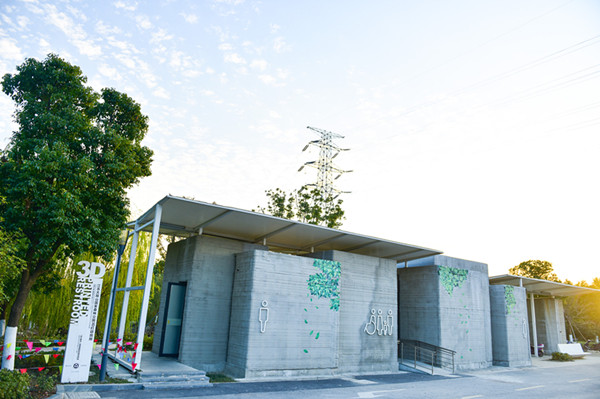Technology set to drive China's toilet revolution forward


The world's first ecological restroom was built using 3-D printing technology at Dayang Mountain National Forest Park, Jiangsu province, in 2016. Guan Yunan / For China Daily
More than 500,000 public restrooms have already been included in the navigation system, and the number will rise to 1 million by the end of the year, the company said.
In addition to mobile apps, state-of-the-art technologies are being applied to the construction of facilities and the disposal of solid and semisolid human waste.
Facilities at Mount Sanqing National Park, a UNESCO World Heritage Centre in the northeast of Jiangxi province, have been fitted with smart toilets that automatically pack waste in biodegradable bags, which are held in storage tanks before being processed.
In 2016, the world's first ecological restroom was built using 3-D printing technology at Dayang Mountain National Forest Park in Jiangsu province.
Construction of the 200-square-meter restroom, built with materials derived from recycled construction waste, was completed in just four weeks, and even though no reinforcing bars were used, the walls are harder than concrete.
The restroom won acclaim from the Ministry of Culture and Tourism, which made an award of 300,000 yuan for the innovative design and environmental benefits.
In addition to conventional sanitation facilities for both sexes, unisex and family toilets have been installed, while nursery rooms and lounges have been added to create the best possible user environment.
Looking to the future, international research institutes, including the California Institute of Technology and the Bill & Melinda Gates Foundation, are cooperating with high-tech companies in Jiangsu to provide technological support for the reconstruction of sanitary facilities in the province.
For example, research is being conducted into the use of microbiological fractionation, by which waste can be separated into its constituent parts by microbial action.




